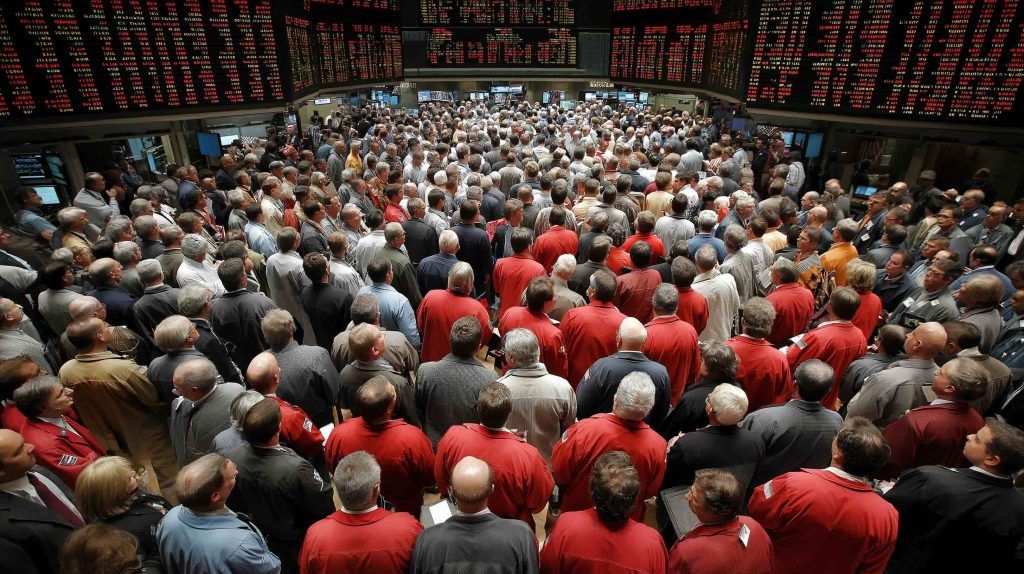Key takeaways
- Stocks clawed back from sharp morning losses after reports of a new Senate proposal to end the record‑long U.S. government shutdown; the S&P 500 and Dow finished near flat while the Nasdaq remained lower. [1]
- The University of Michigan’s consumer‑sentiment index slumped to 50.3, the lowest since June 2022, underscoring pressure on risk appetite. [2]
- The official October jobs report was not published for a second straight month due to the shutdown, intensifying the market’s “data blackout.” [3]
- Tech/AI leaders led decliners this week; the Nasdaq is still on track for its worst week since April as investors reassess AI‑driven valuations. [4]
- Yields eased and haven demand held up: the 10‑year Treasury hovered near 4.07%; gold stayed around $4,000/oz; oil rebounded intraday but headed for a second weekly loss. [5]
Market snapshot: a bruising week ends with a tentative exhale
Wall Street’s Friday session started risk‑off but improved into the close as dip‑buyers stepped in on chatter that Senate Democrats floated a pared‑back plan to reopen the government. That headline support helped the S&P 500 and Dow finish roughly unchanged while the Nasdaq stayed in the red, leaving the tech‑heavy gauge still on pace for its worst week since April. [6]
Under the surface, the week’s story remained the same: expensive tech and AI beneficiaries drove most of the downside, with semiconductors and mega‑cap platforms bearing the brunt as investors questioned the durability of AI capex payoffs. Technical analysts also noted that on Thursday the S&P 500 closed below a widely watched 6,750 level, adding to near‑term caution. [7]
Macro drivers: data blackout and a confidence shock
The Labor Department did not release the October Employment Situation today—an unprecedented second straight month without the jobs report—because the federal shutdown has halted data collection. Economists warn the missing government releases make it harder for markets and the Fed to assess the economy in real time and could even jeopardize some October data entirely. [8]
In lieu of payrolls, traders latched onto University of Michigan sentiment, which fell to 50.3 (prelim November), the weakest since mid‑2022. The survey cited worsening views of current conditions and heightened anxiety around the shutdown’s economic fallout—both consistent with the week’s risk‑off tone. [9]
Meanwhile, negotiations to end the longest U.S. government shutdown on record flickered back into view. A new Senate offer briefly improved risk sentiment, though political leaders remain apart. The duration milestone—and its market implications—has been confirmed by multiple outlets. [10]
Rates, dollar, and commodities: defensive bids linger
Rates drifted lower with the 10‑year Treasury yield around 4.07%, reflecting softer growth expectations and safe‑haven demand. The dollar was little changed on the week, while gold firmed near $4,000/oz as shutdown uncertainty kept hedges in favor. Crude oil bounced intraday but is still on track for a second straight weekly loss amid supply worries and soft U.S. demand signals. [11]
Earnings and movers: travel pops, fintech flops, fitness surprises
Earnings were a mixed catalyst:
- Expedia (EXPE)surged ~15% after lifting its 2025 revenue outlook on stronger corporate travel and better‑than‑expected Q3 results. [12]
- Block (SQ)slumped ~11% as investors focused on profitability shortfalls at Square despite topline growth. [13]
- Peloton (PTON)jumped after beating revenue estimates and touting progress in its turnaround; gains were initially led in pre‑market trade. [14]
At the index level, the earnings season itself remains solid: as of today, 446 S&P 500 companies have reported, with ~82% beating estimates and blended Q3 EPS growth running ~16.8% year over year (ex‑energy ~17.8%). That fundamental backdrop helped cushion Friday’s late‑day buying. [15]
The Fed picture: two cuts in, December in focus
Policymakers cut rates twice this fall, bringing the federal funds target to 3.75%–4.00%. Fed officials, including St. Louis Fed President Alberto Musalem, have argued the easing helps balance still‑above‑target inflation with a cooling labor market. But with official data missing and growth signals mixed, December 9–10 could be a contentious meeting—and not necessarily a lock for another cut. [16]
Why it matters for investors
- Leadership risk: This week reinforced how concentrated U.S. equity performance has been in AI‑adjacent mega‑caps; as the trade is “re‑rated,” broader indexes wobble. Several major outlets estimate ~$1T in AI‑linked market‑cap erased this week. [17]
- Data dependence without data: With the jobs report missing and CPI potentially at risk if the shutdown persists, markets may key off private surveys and corporate guidance more than usual. [18]
- Valuations vs. yields: Slightly lower long rates helped into the bell, but any renewed rise in yields—or a deeper earnings wobble—could pressure high‑multiple growth again. [19]
What’s next
- Policy: Watch weekend headlines from Capitol Hill; any credible pathway to ending the shutdown could extend Friday’s late‑session stabilization. [20]
- Data: If the shutdown continues, more federal releases may be delayed; the White House has already warned CPI could be affected. Private indicators (sentiment, spending trackers) and company guidance will carry extra weight. [21]
- Fed: The next FOMC is Dec. 9–10—markets will parse every speech and proxy for labor/price trends ahead of that decision. [22]
Editor’s note: Index levels and sector performances referenced above reflect reporting available as of market close on Friday, Nov. 7, 2025. This article emphasizes verified end‑of‑day narratives and officially published indicators to meet Google News/Discover standards.
References
1. www.bloomberg.com, 2. www.reuters.com, 3. www.reuters.com, 4. finance.yahoo.com, 5. www.reuters.com, 6. www.wsj.com, 7. www.reuters.com, 8. www.reuters.com, 9. www.reuters.com, 10. www.bloomberg.com, 11. www.reuters.com, 12. www.reuters.com, 13. www.reuters.com, 14. www.reuters.com, 15. lipperalpha.refinitiv.com, 16. www.reuters.com, 17. www.ft.com, 18. www.reuters.com, 19. www.reuters.com, 20. www.bloomberg.com, 21. www.reuters.com, 22. www.federalreserve.gov








